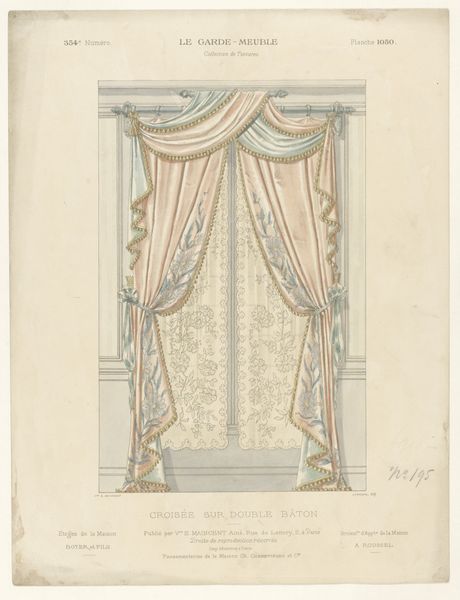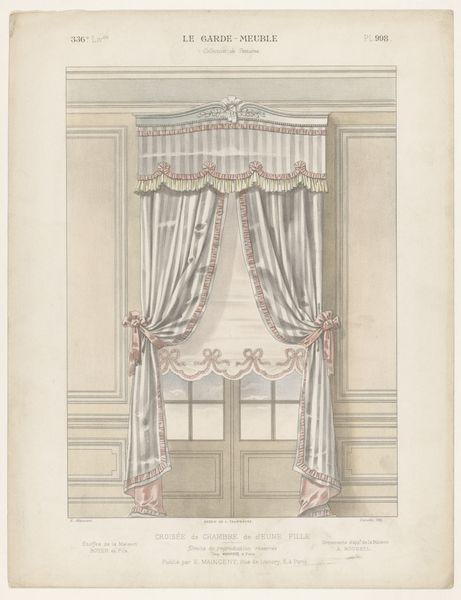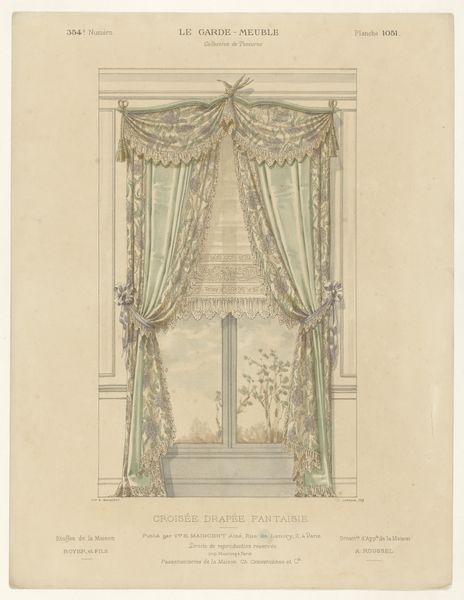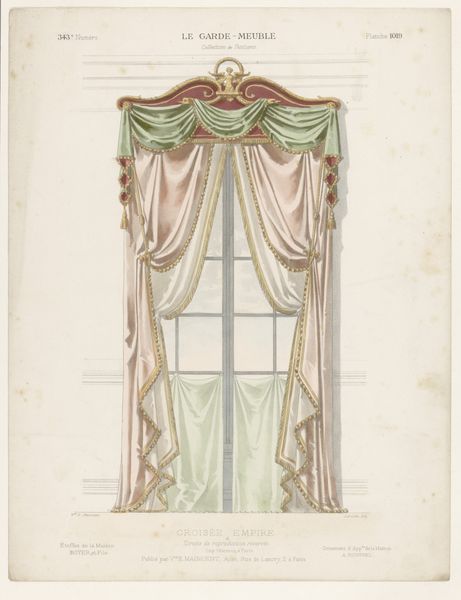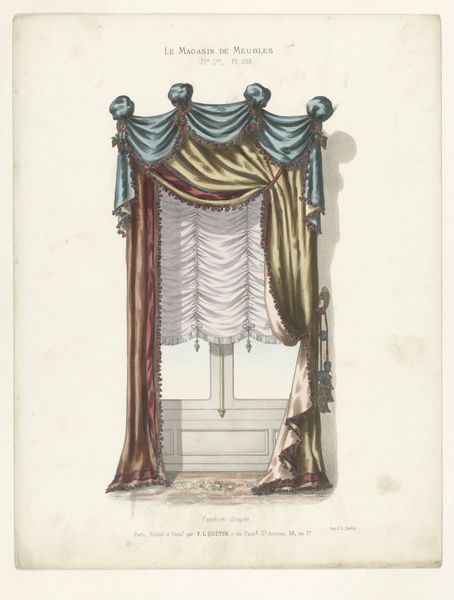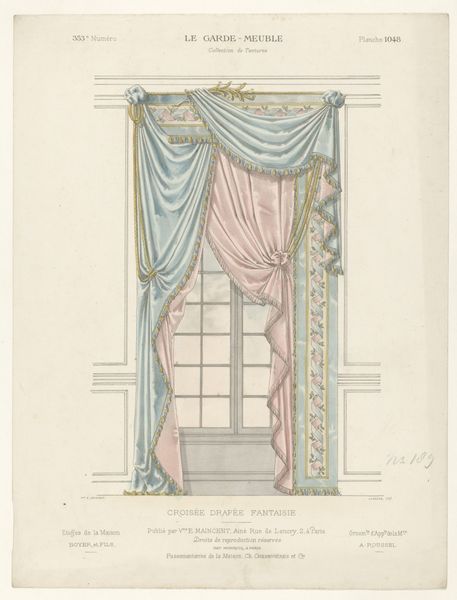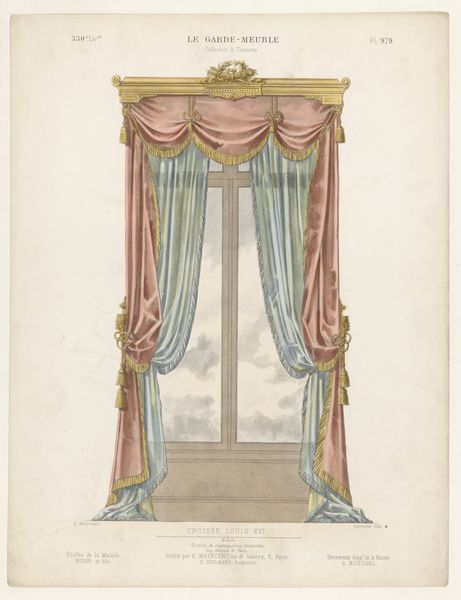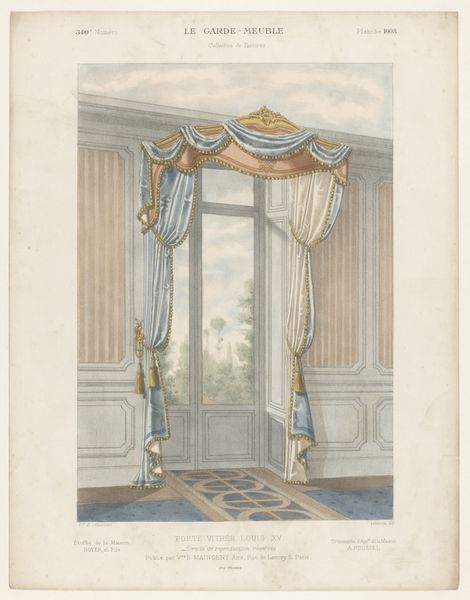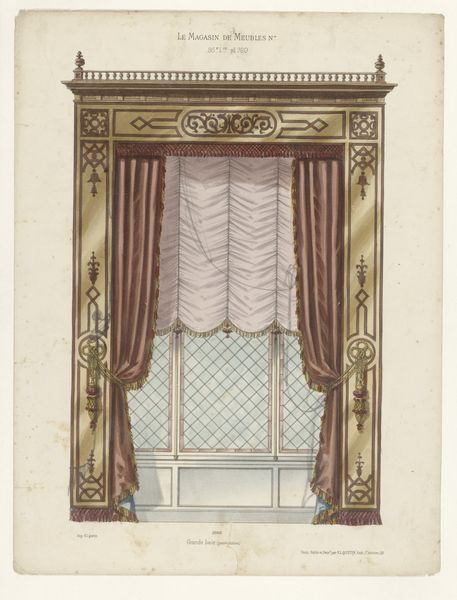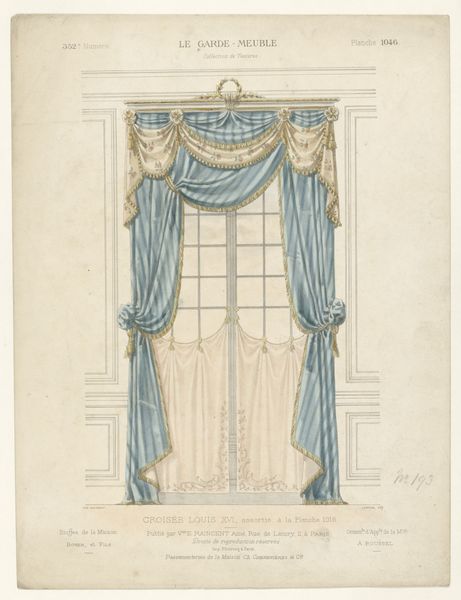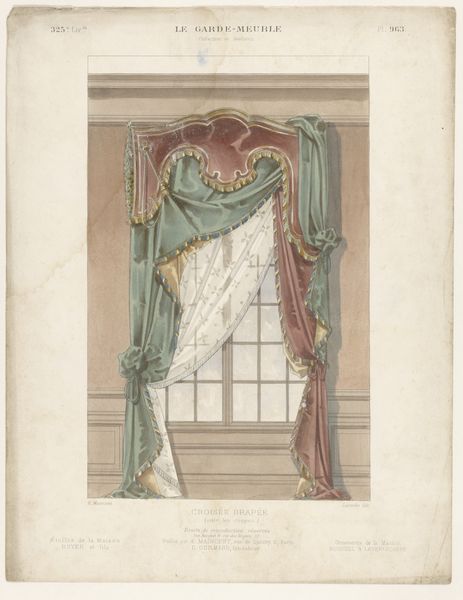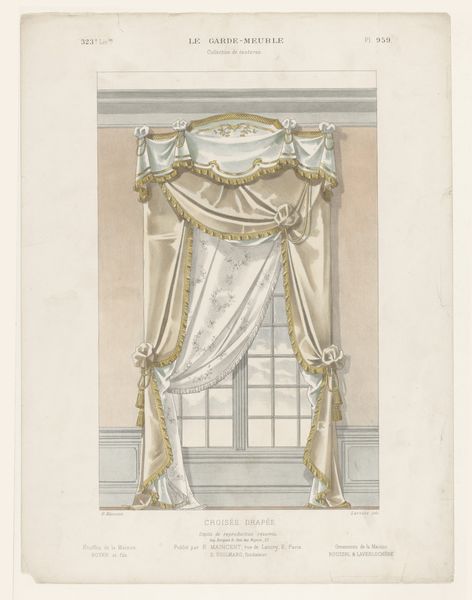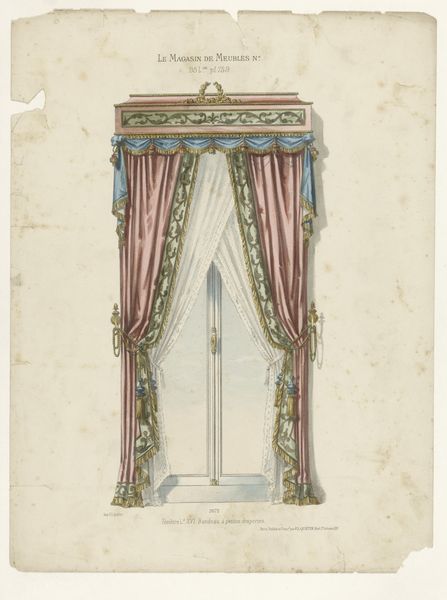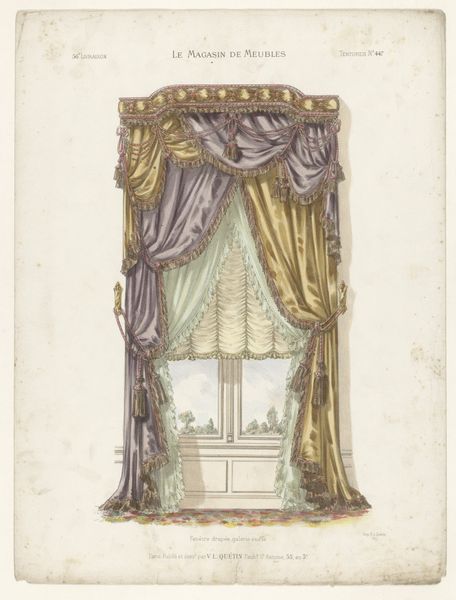
drawing, print, engraving
#
drawing
#
neoclassicism
# print
#
classical-realism
#
orientalism
#
line
#
academic-art
#
decorative-art
#
engraving
Dimensions: height 359 mm, width 358 mm
Copyright: Rijks Museum: Open Domain
Editor: Here we have "Deur met gordijnen" – or "Door with Curtains" – a drawing from around 1895 to 1910 by Léon Laroche. It seems to be an engraving, and the detail in the fabric is quite impressive. It’s clearly staged; the light emphasizes the drape perfectly. What strikes you most about this image? Curator: Well, immediately I’m drawn to the title, "Le Garde-Meuble," meaning "furniture storage." This wasn't just a pretty picture, but part of a larger catalog intended to promote French decorative arts, and therefore, French economic and cultural influence. We are meant to understand something about the values that elevated a room beyond functionality. How do you think this image might be consumed by different audiences at the time? Editor: I imagine the upper classes, those who could afford such elaborate curtains, would use it as inspiration or even a direct order form. Perhaps middle-class individuals viewed it with aspirational interest. Curator: Exactly. Consider how institutions like the "Garde-Meuble" and exhibitions showcasing decorative arts influenced consumer culture and shaped perceptions of taste. Who benefited most from creating or reinforcing that particular kind of taste? Look closer, what societal messages might the deliberate artifice send? Editor: Hmmm… I guess it reinforces a sense of luxury and exclusivity. The perfect folds and expensive-looking trim suggest wealth and careful maintenance. It's about presenting a certain image. And that reinforces the social hierarchy, doesn't it? Curator: Precisely. This wasn't simply about selling curtains; it was about selling status and a carefully constructed version of French identity through consumerism. Think of how these images were circulated, consumed, and then integrated (or not) into the fabric of daily life. What's your take-away from understanding the role this image served within the wider social and political landscape? Editor: I see it now – it's less about the curtain itself, and more about the aspirations, marketing, and social structure surrounding it. I'll never look at decorative art the same way again.
Comments
No comments
Be the first to comment and join the conversation on the ultimate creative platform.
